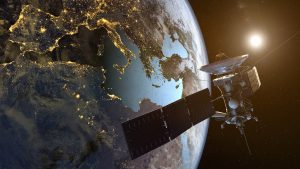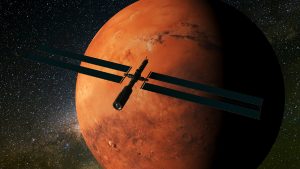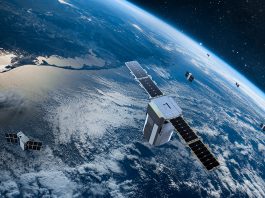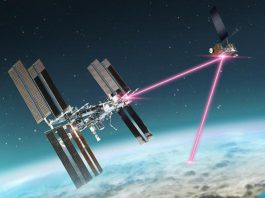Thierry Klein, President of Bell Labs Solutions Research at Nokia, outlines the development of mobile networks in space and how they can fuel future space missions.
We have come a huge distance from the first lunar landing when sending humans and machines to outer space represented a watershed moment in human ingenuity. Although every mission to outer space will remain a huge accomplishment, the risks, and to some extent, the perceived rewards, have become lesser as space technology has made space travel more accessible. So accessible that we are now regularly rocketing everyday civilians to explore the cosmos!
What this means is not that space travel has become ‘easy’, but that our aspirations have broadened as space travel, a thing we once deemed impossible, has become borderline normality with the advancement of seriously sophisticated tech.
This has encouraged our innovators to explore new ventures in space, not just set on exploring the universe but on making life on Earth better from beyond, too. Space travel is no longer just about sending people to space but about deriving value for the everyday citizen on Earth.
Although mobile networks in space have improved over the years, the things we need to succeed have remained constant. Communication is one of the most crucial elements in this regard; wherever humans and machines go in the Solar System, they need to be able to reach one another.
We couldn’t have gone to the moon without communication, and we certainly cannot get to Mars without it.
Inter-stellar cooperation
Connectivity and communications are critical for any future sustained human presence on other planets. Astronauts will need the same advanced capabilities in space we have on Earth to support their missions and live their lives.
They will need access to voice, video and data communications capabilities, telemetry, and biometric data. To perform their mission tasks, they must tap into vast sensor grids, deploy scientific payloads and experiments, and remotely operate robots and other machinery. All these scenarios and applications will require robust mobile network connectivity.
We want to prove that mobile networks in space can provide the reliable, high-capacity, and efficient connectivity needed for future crewed and uncrewed missions to the Moon and other planets.
Connectivity and communications are critical in space, so we’re working with partners to share knowledge and expertise in areas that can unlock new value for those leading the charge on all things space exploration.

NASA is one such partner and is running its Tipping Point Initiative to bring together best-in-class technology companies and foster the development of mobile networks in space to support future NASA missions. As part of this initiative, the first cellular network on the Moon will be deployed to demonstrate that cellular technologies can provide critical communications for future lunar or Martian missions. This mission is the IM-2.
The lunar 4G/LTE system will have two primary components forming a network to allow the vehicles and the lander to communicate. A powerful direct-to-Earth radio connection from the lander will provide a link home, over which mission controllers will receive data and images and remotely operate the vehicles over the cellular network.
We want to meet the critical communications needs of space exploration for near-term and long-term missions. We feel the best way to do this isn’t by inventing an entirely new communications platform for planetary exploration but by utilising the tried-and-testing technologies we use here on Earth.
Putting our mobile networks in space to the test
IM-2 has multiple mission goals, including deploying a York Space Systems communications satellite into lunar orbit and deploying the first exploration vehicles on the Moon’s south pole.
The 4G/LTE network will be a key element of several mission tasks, providing connectivity between the Nova-C lander and two mission vehicles. It’s the perfect time to trial the world’s best mobile networks in space.
Utilising the sophisticated RESOURCE camera developed by MIT, MAPP will snap 3D images and shoot videos of unique rock formations and craters, and it will look for signs of lunar ice in the shadows near the edges of those craters.
MAPP will also deploy the AstroAnt, a miniature rover that will ride on top of the Lunar Outpost rover. The AstroAnt, about the size of a Matchbox toy car, will drive around on the MAPP’s roof collecting temperature data while the MAPP rover rolls along the lunar surface. The images, data and telemetry collected by MAPP will be returned to the lander over the 4G/LTE network and relayed to Earth.
Meanwhile, Lunar Outpost mission controllers in Colorado will issue commands to the rover over the same connection.
A second vehicle, the Micro-Nova ‘hopper’, will fire hydrazine rockets in controlled bursts to propel itself from place to place, accessing areas other vehicles can’t reach. The main task of the Micro-Nova is to search for lunar ice deep within a lunar crater. One expected component of that ice is water, which would be critical to any future crewed mission to the Moon.
The 4G/LTE network will then relay data from the Micro-Nova back to the lander and Earth. It’s possible that the first images of ice on the Moon could be sent over mobile networks in space!
Although this mission is the first of its kind, IM-2 is not the first foray into space for telecoms providers. Traditional communication satellites are geostationary and have been in orbit for over 50 years.
Not only this but in the last decade, private LEO satellite constellations have provided Internet connectivity to rural areas and satisfied the global networking services of tomorrow. So, albeit not a ‘first ever’ for space-based communications, this mission is the first to support the needs of future communities not on Earth, but on the Moon, and even Mars.
To Mars… and beyond?
The trove of data collected on IM-2 will give us a wealth of knowledge about a key area of the Moon, while also providing critical insights for advancing communications technologies.
With its Tipping Point initiative, NASA is fostering a new era of public-private partnerships, shepherding the development of critical space technologies. Just as communications and mobile networks are a vital part of the economy on Earth, they will be a vital element in any future lunar or Martian economy.
Mobile networks in space will connect personal devices used by astronauts, like tablets, laptops, and wearables. One day, astronauts may even be able to take their smartphones to space, using them in a Moon or Mars habitat the same way they would use them on Earth.

This network won’t just provide key data for future lunar communications systems. We will also gain knowledge we can utilise right here on Earth.
The Moon’s surface is one of the most inhospitable environments we have ever encountered, with no atmosphere, no natural protection from cosmic radiation, and temperatures that can fluctuate by as much as 300°C between lunar day and night.
If we can build a mobile network that can function on the Moon, we can create a network that can function in the most extreme environments on Earth.









